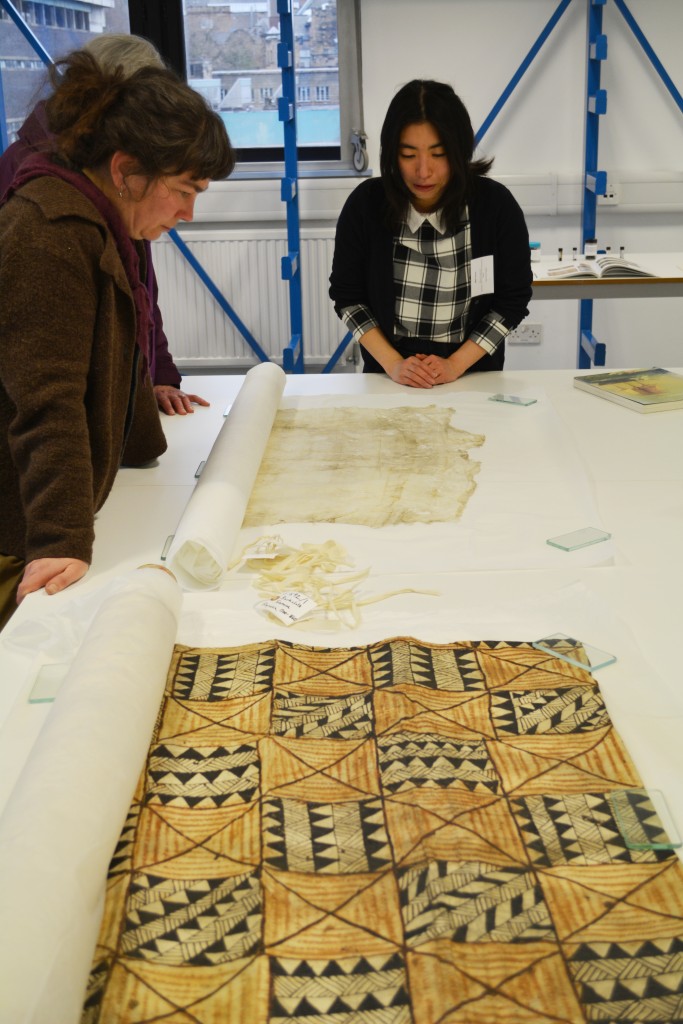
By Professor Nick Pearce, Trustee of the Textile Conservation Foundation and Richmond Chair of Fine Arts, University of Glasgow.
The Centre for Textile Conservation and Technical Art History opened its doors again on Friday 18th March. Open Day at the Centre is an annual opportunity for those within and outwith the University to see and hear all about its work – and that work is diverse and growing. At the heart of its activity is the two-year Masters Programme in Textile Conservation, but as the nearly 200 visitors (a record number I am told), learned a growing slate of research projects and collaborations with other institutions is very much to the fore, enhancing the Centre’s international reputation while enriching the student experience.
This was my first chance to attend a Centre Open Day and so I wasn’t too sure what to expect. It quickly became clear why this is such an important event in the calendar – every workroom was packed with visitors all eager to engage with the students and their current projects. It is easy to think of conservation as a ‘backroom’ activity, but an important part of a student’s training is communication, whether it be with a client, funder or an interested bystander. They were certainly putting this into practice. Each student was eagerly discussing their object and its treatment to specialist and non-specialist alike and the range of objects and treatments is extensive. One object, from Dumfries Museum, was particularly remarkable; a padded scarlet jacket which had slashes to the arms and shoulders and additional red staining. I was told that this belonged to Colin Mackenzie, a quite remarkable officer in the East India Company army, who was wounded in a mutiny in 1855, the evidence of which could still be seen on the jacket. The student (Hannah Vickers) was tasked with preparing this object for display a Dumfries Museum – preserving the evidential staining, while also making a distressed object safe to exhibit. Another second year student, Noral Frankel had an equally challenging task; the conservation of a late 19th century ceremonial head covering for a Japanese fireman, beautifully designed and heavily decorated in metal thread which was rapidly unravelling. An object from Glasgow Museums’ collection, the range of conservation skills and techniques required to stabilize such an object for storage or display again became evident.
Open Day also provides Centre staff the opportunity to showcase current research projects. One major one, led by Frances Lennard examining Pacific barkcloth as material, technique, plant source and artefact, is an international collaboration between Glasgow University, Kew’s Royal Botanic Gardens and the Natural History Museum at the Smithsonian Institution in Washington DC. Speaking to project conservator Misa Tamura, who is conserving the historic barkcloth collection in the Hunterian Museum, I got to hear about the discoveries already being made through examining pieces in advance of treatment. Very little is known about the plant species and techniques used in making barkcloth and although the pieces will undergo analysis by the scientists on the project, much can be and is being discovered through the conservation process.
This year’s Open Day also witnessed an enlarged Centre. A new lab for the Pacific barkcloth project together with offices to house the expanding staff and research students are now situated on Level 5 of the Robertson Building. With the growing interest in the Centre’s activities (if this bumper attendance at Open Day is any indication), it is just as well that capacity is also growing.







